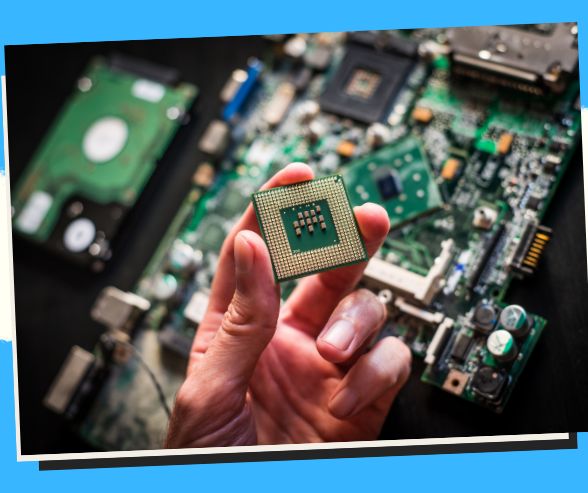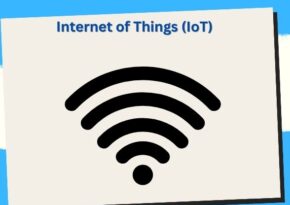
How Advances in Processor Architecture Are Redefining the Future of Computing
Explore how the latest advancements in processor architecture are setting new benchmarks for computing power and efficiency.
How Processor Architecture Advances Redefine Computing
Processor architecture has always been at the heart of computing advancements. From the earliest CPUs to today’s cutting-edge processors, innovations in architecture have continually redefined what’s possible in computing. This article explores how recent advances in processor architecture are reshaping the world of technology and provides practical tips for leveraging these advancements. 🌟💻🔍
Understanding Processor Architecture
Processor architecture refers to the design and structure of a computer’s central processing unit (CPU). It encompasses the organization of the processor’s components, including its cores, cache, and instruction set. Over time, advances in processor architecture have led to significant improvements in performance, efficiency, and functionality.
Key Components:
- Cores: The individual processing units within a CPU. More cores generally allow for better multitasking and parallel processing.
- Cache: A small, high-speed memory area that stores frequently accessed data to speed up processing.
- Instruction Set: The set of commands that the processor can execute. Different architectures support different instruction sets. 🧩
Historical Perspective: Evolution of Processor Architecture
To appreciate the impact of recent advancements, it’s useful to look at the evolution of processor architecture:
- Early CPUs: The Beginnings
- Single-Core Processors: The earliest CPUs had a single core, handling one instruction at a time. Examples include the Intel 4004 and 8086. 🕰️
- Multi-Core Processors: Enhanced Performance
- Dual-Core and Quad-Core: The introduction of multi-core processors allowed for simultaneous processing of multiple instructions, improving multitasking and performance. 🌐
- Advanced Architectures: Modern Innovations
- 64-Bit Architecture: Enabled processing of larger amounts of data and memory, enhancing performance for demanding applications.
- SIMD and Vector Processing: Introduced parallel processing techniques for handling large data sets and complex computations. 🚀
Recent Advances in Processor Architecture
Recent advancements in processor architecture have introduced several innovative features and techniques that are redefining computing. Here are some of the most impactful developments:
1. Heterogeneous Computing: Combining Different Architectures
Heterogeneous computing involves integrating different types of processing units, such as CPUs, GPUs, and specialized accelerators, into a single system. This approach leverages the strengths of each type of processor to optimize performance and efficiency.
Key Developments:
- CPUs and GPUs Integration: Modern processors often include integrated graphics processing units (GPUs) for improved graphical performance and parallel processing capabilities.
- Specialized Accelerators: Incorporates accelerators for tasks like machine learning (e.g., Tensor Processing Units) and cryptography. 🧠⚙️
Tips for Leveraging Heterogeneous Computing:
- Optimize Workloads: Design applications to utilize different processors based on their strengths (e.g., using GPUs for parallelizable tasks).
- Use Modern APIs: Leverage APIs and frameworks that support heterogeneous computing, such as CUDA for GPUs or TensorFlow for machine learning.
2. Quantum Computing: A New Paradigm
Quantum computing represents a revolutionary shift in processor architecture by using quantum bits (qubits) instead of classical bits. Quantum computers have the potential to solve complex problems that are intractable for classical computers.
Key Developments:
- Quantum Supremacy: Achieved by Google, demonstrating that quantum computers can perform certain tasks faster than classical computers.
- Quantum Algorithms: Algorithms like Shor’s algorithm for factoring large numbers and Grover’s algorithm for searching databases. 🔬🧩
Tips for Exploring Quantum Computing:
- Stay Informed: Follow advancements in quantum research from institutions like IBM, Google, and universities.
- Experiment with Quantum Programming: Use platforms like IBM’s Qiskit or Microsoft’s Quantum Development Kit to get hands-on experience with quantum algorithms.
3. Neuromorphic Computing: Mimicking the Brain
Neuromorphic computing aims to replicate the brain’s architecture and processing methods to create more efficient and adaptable computing systems. Neuromorphic chips simulate neural networks and spiking neurons.
Key Developments:
- Neuromorphic Chips: Devices like Intel’s Loihi and IBM’s TrueNorth are designed to perform cognitive tasks and adapt to new information.
- Spiking Neural Networks: Mimic the brain’s neural spikes for more efficient data processing. 🧠💭
Tips for Embracing Neuromorphic Computing:
- Explore Applications: Investigate how neuromorphic computing is used in robotics, AI, and edge computing.
- Leverage Frameworks: Use software tools and frameworks developed for neuromorphic research to experiment with these technologies.
4. 3D Stacking and Integration: Boosting Performance and Efficiency
3D stacking involves stacking multiple layers of silicon chips to create more compact and efficient processors. This approach can enhance performance by reducing the distance data must travel between components.
Key Developments:
- 3D NAND Memory: Stacking memory cells to increase storage density and performance.
- Through-Silicon Vias (TSVs): Vertical interconnections between stacked chips that improve data transfer speeds. 📏🔗
Tips for Utilizing 3D Stacking:
- Consider High-Density Applications: Use 3D-stacked memory and processors in applications requiring high performance and compact form factors.
- Stay Updated on Innovations: Follow developments in 3D stacking technologies and their impact on various computing applications.
5. Energy Efficiency: Balancing Performance and Power Consumption
Advancements in processor architecture increasingly focus on improving energy efficiency to balance performance with power consumption. Energy-efficient designs help extend battery life in mobile devices and reduce operational costs in data centers.
Key Developments:
- Dynamic Voltage and Frequency Scaling (DVFS): Adjusts processor voltage and frequency based on workload to save power.
- Low-Power Architectures: Designs like ARM’s Cortex series focus on energy efficiency for mobile and embedded applications. 🔋🌿
Tips for Enhancing Energy Efficiency:
- Optimize Power Settings: Configure dynamic voltage and frequency scaling in devices to improve power efficiency.
- Choose Energy-Efficient Components: Select processors and components designed for low power consumption, especially for battery-operated devices.
Practical Tips for Leveraging Advances in Processor Architecture
To make the most of these architectural advancements, consider the following tips:
1. Stay Updated with Industry Trends
Technology evolves rapidly, so staying informed about the latest developments in processor architecture will help you make informed decisions and stay ahead of the curve. Follow tech news, read research papers, and explore industry reports. 📈🔍
2. Leverage Emerging Technologies
Incorporate emerging technologies like quantum computing, neuromorphic computing, and heterogeneous computing into your projects. Experiment with new tools and platforms to explore their potential benefits and applications. 🚀🔧
3. Optimize Software for New Architectures
Ensure that your software is optimized to take advantage of modern processor architectures. This includes writing efficient code, leveraging parallel processing capabilities, and using appropriate APIs and frameworks. 🖥️⚙️
4. Consider Future-Proofing
When investing in new technology or designing systems, consider future-proofing by choosing components and architectures that offer scalability and adaptability. Look for features like modularity and upgradability to extend the lifespan of your investments. 🔮🔗
5. Prioritize Energy Efficiency
As processor architectures advance, energy efficiency becomes increasingly important. Select energy-efficient components, configure power settings, and design systems with sustainability in mind to reduce operational costs and environmental impact. 🌱💡
How Processor Architecture Advances Redefine Computing: A Comprehensive Exploration
Processor architecture is the cornerstone of computing technology, influencing how efficiently and powerfully devices perform tasks. Over the years, advancements in processor architecture have redefined the landscape of computing, enabling breakthroughs in performance, energy efficiency, and versatility. In this article, we’ll delve into how these advancements are reshaping the world of computing, explore the benefits, review case studies, and provide key takeaways and FAQs to deepen our understanding. 🌟🖥️
Benefits of Advanced Processor Architectures
- Increased Performance 🚀
- Modern processor architectures feature higher clock speeds, more cores, and advanced design techniques, resulting in significantly improved performance for complex tasks and applications.
- Enhanced Energy Efficiency ⚡
- Advances in processor architecture focus on optimizing power consumption, reducing energy use, and extending battery life in portable devices.
- Improved Multitasking 🖥️
- Multi-core processors enable better multitasking by allowing multiple processes to run simultaneously, improving overall system responsiveness and efficiency.
- Accelerated Data Processing 📊
- Advanced architectures support faster data processing and analysis, essential for applications like big data analytics, real-time simulations, and machine learning.
- Greater Scalability 📈
- Modern processors are designed to scale efficiently with increasing workloads, providing the flexibility to handle growing data and application demands.
- Enhanced Graphics and Media Processing 🎨
- Specialized architectures, such as GPUs, offer advanced capabilities for rendering graphics and processing media, benefiting gaming, video editing, and visualization tasks.
- Improved Security 🔐
- New architectures incorporate advanced security features, such as hardware-based encryption and secure execution environments, to protect against cyber threats.
- Support for Emerging Technologies 🌐
- Cutting-edge architectures support emerging technologies like artificial intelligence, quantum computing, and edge computing, driving innovation in various fields.
- Optimized Cloud Computing ☁️
- Advanced processor designs enhance cloud computing performance, enabling more efficient virtual machine management and data centre operations.
- Cost Efficiency 💵
- Advances in architecture lead to more cost-effective solutions by improving performance per watt and reducing overall system costs.
Case Studies
- Intel’s Core i9 Series 🧠
- Intel’s Core i9 processors feature multiple cores and high clock speeds, delivering exceptional performance for gaming, content creation, and professional applications.
- AMD Ryzen 5000 Series 🔥
- AMD’s Ryzen 5000 series processors, built on the Zen 3 architecture, offer significant performance gains and efficiency improvements, challenging Intel’s dominance in the market.
- Apple M1 Chip 🍎
- Apple’s M1 chip integrates CPU, GPU, and RAM on a single chip, providing remarkable performance and energy efficiency in MacBooks and iPads.
- NVIDIA GeForce RTX 3080 🎮
- The GeForce RTX 3080, based on NVIDIA’s Ampere architecture, delivers high-performance graphics and real-time ray tracing for gaming and professional graphics applications.
- IBM Power10 Processors 💪
- IBM’s Power10 processors offer enhanced performance and security features, optimizing enterprise applications and data center operations.
- Google Tensor Processing Units (TPUs) 🧩
- Google’s TPUs are designed specifically for machine learning tasks, providing high performance for training and inference in AI applications.
- Qualcomm Snapdragon 8 Gen 1 📱
- The Snapdragon 8 Gen 1 processor enhances mobile computing with improved AI capabilities, graphics performance, and power efficiency for smartphones.
- ARM Cortex-A78 🌟
- ARM’s Cortex-A78 architecture provides improved performance and energy efficiency for mobile and embedded devices, driving advancements in smartphones and IoT.
- Tesla Full Self-Driving Computer 🚗
- Tesla’s custom-designed processors for self-driving capabilities offer high-speed processing for real-time vehicle navigation and decision-making.
- AMD EPYC 7003 Series 💼
- AMD’s EPYC 7003 series processors deliver high performance and scalability for data centers and enterprise workloads, optimizing cloud and server operations.
Key Takeaways
- Performance Gains 🚀
- Advances in processor architecture lead to significant performance improvements, enabling faster and more efficient computing for a wide range of applications.
- Energy Efficiency ⚡
- Modern architectures prioritize energy efficiency, reducing power consumption and extending battery life in portable devices.
- Multicore Advantages 🖥️
- Multi-core designs enhance multitasking and parallel processing capabilities, improving overall system responsiveness and performance.
- Data Processing Speed 📈
- Faster data processing is achieved through advanced architectures, supporting real-time analytics and complex simulations.
- Graphics and Media Excellence 🎨
- Specialized architectures like GPUs provide superior graphics and media processing, enhancing gaming and creative applications.
- Enhanced Security 🔐
- Advanced security features in new architectures protect against cyber threats, ensuring data integrity and system safety.
- Support for AI and Emerging Tech 🌐
- Cutting-edge architectures drive innovation in artificial intelligence, quantum computing, and other emerging technologies.
- Cloud Computing Efficiency ☁️
- Optimized processor designs improve cloud computing performance and cost-effectiveness, benefiting data centers and virtual environments.
- Cost-Effective Solutions 💵
- Advances in architecture lead to more cost-effective computing solutions by improving performance per watt and reducing system costs.
- Future Innovation 🔮
- Continued advancements in processor architecture promise further improvements in performance, efficiency, and capabilities, shaping the future of computing.
FAQs
Q1: What is processor architecture?
A1: Processor architecture refers to the design and organization of a processor’s components and their interactions, influencing performance, efficiency, and capabilities.
Q2: How do advancements in processor architecture impact performance?
A2: Advancements enhance performance by increasing clock speeds, adding more cores, and improving design efficiency, leading to faster and more powerful computing.
Q3: What role does energy efficiency play in processor design?
A3: Energy efficiency is crucial for reducing power consumption and extending battery life, especially in portable devices and data centers.
Q4: How do multi-core processors improve multitasking?
A4: Multi-core processors allow multiple tasks to run simultaneously, enhancing system responsiveness and efficiency by distributing workloads across different cores.
Q5: What are specialized processor architectures used for?
A5: Specialized architectures, such as GPUs and TPUs, are designed for specific tasks like graphics rendering and machine learning, providing optimized performance for those applications.
Q6: How does processor architecture affect security?
A6: Advanced architectures incorporate security features like hardware-based encryption and secure execution environments to protect against cyber threats and ensure data integrity.
Q7: What are the benefits of integrating CPU, GPU, and RAM on a single chip?
A7: Integration reduces latency, improves communication between components, and enhances overall performance and efficiency, as seen in Apple’s M1 chip.
Q8: How does processor architecture support cloud computing?
A8: Optimized architectures enhance cloud computing by improving performance, scalability, and cost-efficiency for virtual machines and data center operations.
Q9: What are some challenges associated with designing advanced processors?
A9: Challenges include managing heat dissipation, power consumption, and ensuring compatibility with existing technologies and software.
Q10: What future advancements can we expect in processor architecture?
A10: Future advancements may include further improvements in performance, energy efficiency, integration with emerging technologies, and continued innovation in specialized processing capabilities.
Conclusion
Advances in processor architecture have continually redefined the world of computing, from the early days of single-core CPUs to the latest innovations in quantum and neuromorphic computing. These advancements have led to significant improvements in performance, efficiency, and functionality, transforming how we interact with technology.
By staying informed, embracing emerging technologies, and optimizing software and hardware, you can leverage these advancements to enhance your projects and stay at the forefront of technological innovation. The future of computing is bright, and the possibilities are boundless! 🌟💻🚀
Embrace the evolution of processor architecture and explore the endless opportunities it offers. The journey of innovation continues, and the best is yet to come! 🌐🔍
Key Phrases
- Advances in processor architecture
- Redefining computing power
- Next-gen processor designs
- Transforming computing technology
- Innovations in processor architecture
- Future of processor technology
- Revolutionary processor advancements
- High-performance processor architecture
- Modern computing breakthroughs
- Cutting-edge processor designs
Best Hashtags
- #ProcessorArchitecture
- #ComputingRevolution
- #TechInnovations
- #NextGenProcessors
- #AdvancedTechnology
- #ComputingPower
- #TechBreakthroughs
- #FutureOfComputing
- #ProcessorAdvancements
- #ModernTech
Save/Share this story with QR CODE
Disclaimer
This article is for informational purposes only and does not constitute endorsement of any specific technologies or methodologies and financial advice or endorsement of any specific products or services.
📩 Need to get in touch?
📩 Feel free to Contact NextGenDay.com for comments, suggestions, reviews, or anything else.
We appreciate your reading. 😊Simple Ways To Say Thanks & Support Us:
1.) ❤️GIVE A TIP. Send a small donation thru Paypal😊❤️
Your DONATION will be used to fund and maintain NEXTGENDAY.com
Subscribers in the Philippines can make donations to mobile number 0917 906 3081, thru GCash.
3.) 🛒 BUY or SIGN UP to our AFFILIATE PARTNERS.
4.) 👍 Give this news article a THUMBS UP, and Leave a Comment (at Least Five Words).
AFFILIATE PARTNERS

World Class Nutritional Supplements - Buy Highest Quality Products, Purest Most Healthy Ingredients, Direct to your Door! Up to 90% OFF.
Join LiveGood Today - A company created to satisfy the world's most demanding leaders and entrepreneurs, with the best compensation plan today.



 Business Technology, Finance Technology & Information Technology
Business Technology, Finance Technology & Information Technology





